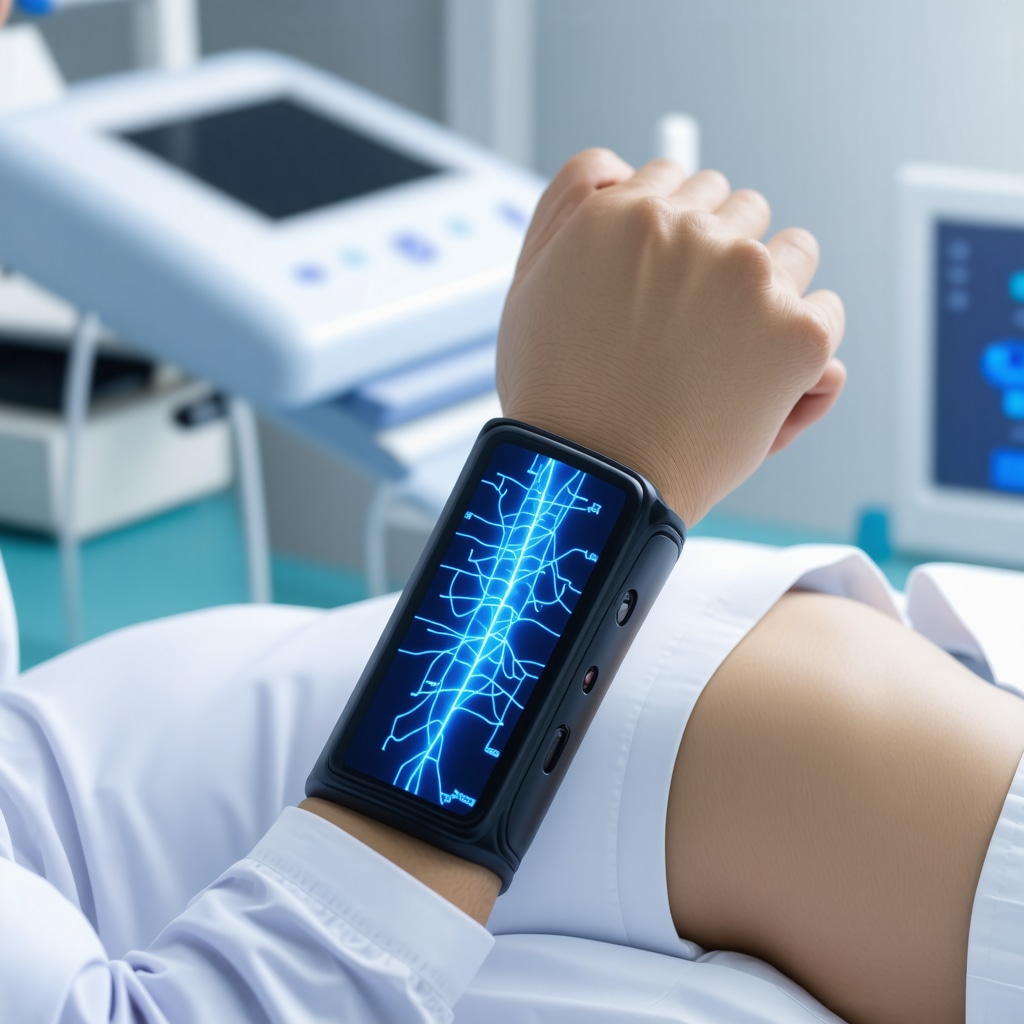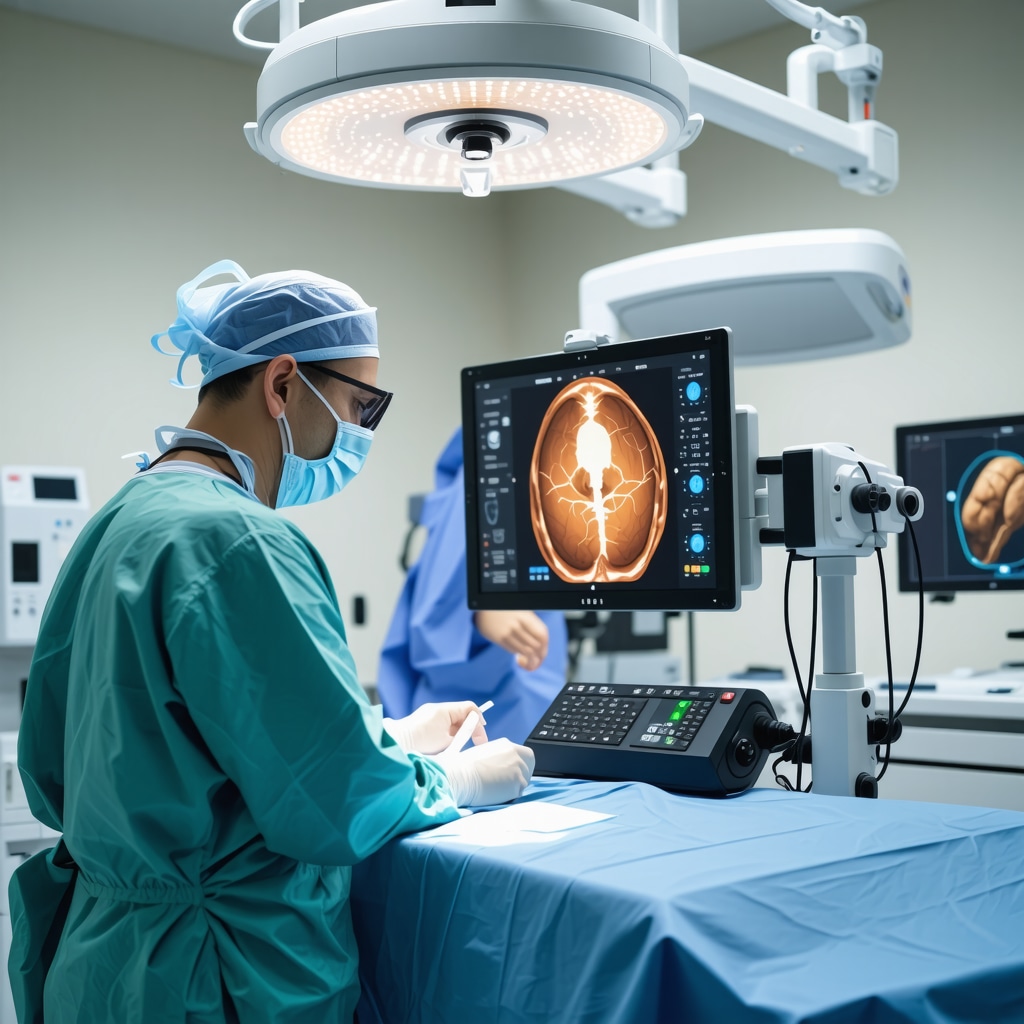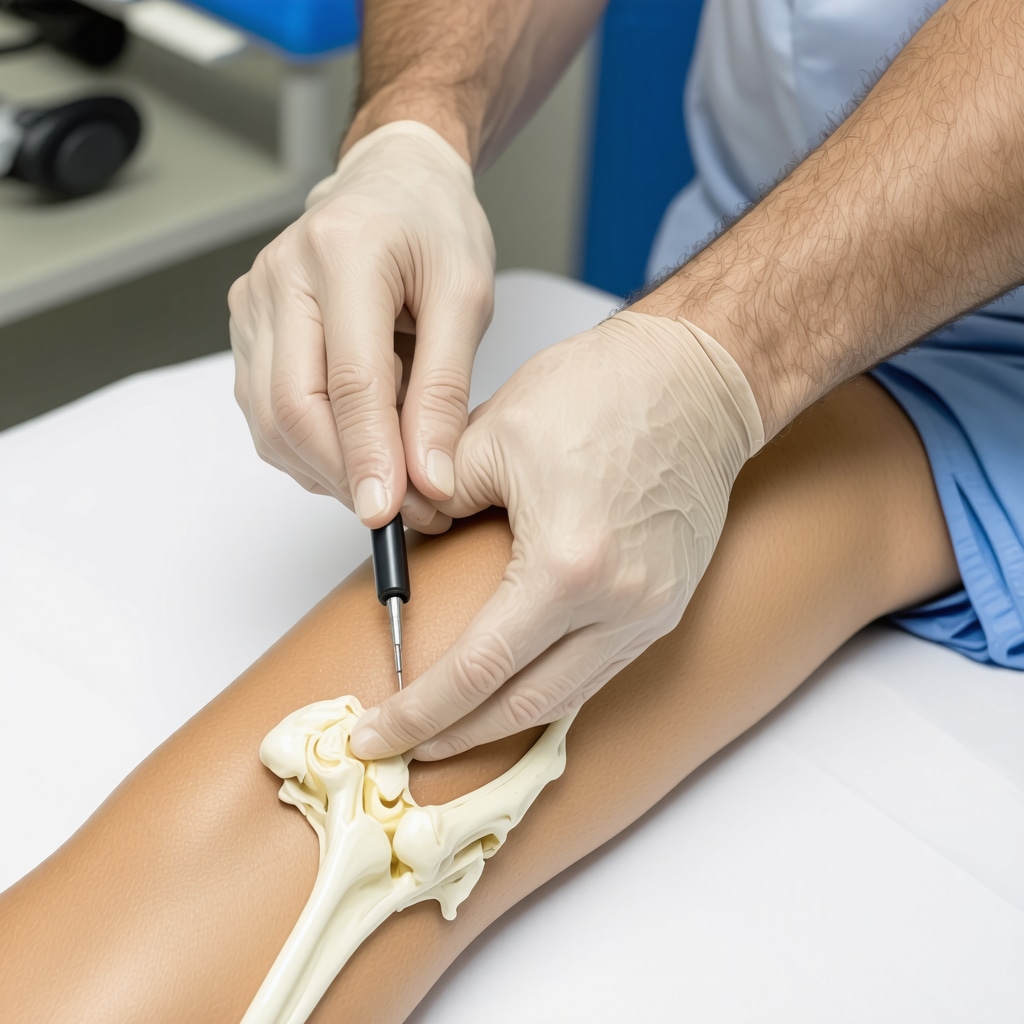When Your Nerves Throw a Tantrum: The Orthopedic Fixes You Need
Imagine this: you’re typing away at your desk, and suddenly, your fingers tingle like they’ve been dipped in electric juice. Or maybe there’s that nagging, relentless pain shooting down your leg like an uninvited guest who just won’t leave. Nerve compression might be the culprit, and believe me, it’s no fun party trick. But here’s the good news — effective orthopedic treatments are not just a fantasy. They actually deliver relief, often without drastic surgery.
Why Does Nerve Compression Feel Like a Mischievous Saboteur?
Nerve compression occurs when surrounding tissues — like bones, muscles, or tendons — press on a nerve, causing inflammation, pain, numbness, or weakness. Orthopedic specialists often see this in conditions such as carpal tunnel syndrome, sciatica, or cervical radiculopathy. The key to effective treatment lies in correctly diagnosing the root cause and tailoring the intervention accordingly.
Could Non-Surgical Solutions Really Be Your Best Bet?
It’s tempting to jump straight to surgery, but many patients find relief through conservative treatments. Physical therapy, targeted exercises, and ergonomic adjustments can ease nerve pressure significantly. For example, exploring effective non-surgical care for herniated discs might surprise you with its success rates. Sometimes, a little patience and the right guidance from an orthopedic specialist can keep you off the operating table and back to your life faster.
When the Going Gets Tough, the Tough Get Specialized
Of course, not all nerve compressions respond to conservative care. In cases where symptoms persist or worsen, minimally invasive surgeries can be game-changers. These procedures aim to relieve nerve pressure with less tissue damage and quicker recovery times — a stark contrast to the daunting surgeries of yesteryear. You can dive deeper into minimally invasive back pain treatments to understand how modern orthopedics is revolutionizing this field.
Trust But Verify: Who’s Got Your Back (and Nerves)?
Finding the right orthopedic surgeon isn’t just about credentials; it’s about trust, expertise, and a collaborative approach. For those navigating this maze, resources such as our guide on choosing the right orthopedic surgeon for your spine offer invaluable insights.
According to a comprehensive analysis published by the National Center for Biotechnology Information, combining physical therapy with selective surgical interventions has significantly improved patient outcomes in nerve compression syndromes.
Have you experienced nerve compression symptoms or tried any orthopedic treatments? Share your story or questions below — your experience could be the key to someone else’s relief journey.
Exploring Cutting-Edge Orthopedic Interventions for Persistent Nerve Compression
When conservative treatments fall short, orthopedic specialists often explore advanced therapeutic avenues that blend technology with precision medicine. Techniques like endoscopic nerve decompression and targeted biologic injections are gaining traction, offering promising alternatives for patients wary of traditional surgery.
For example, platelet-rich plasma (PRP) injections have shown potential in reducing inflammation and promoting nerve healing in select cases. These emerging modalities reflect a dynamic shift in orthopedic care, emphasizing personalized treatment plans that address both symptoms and underlying pathology.
How Does Integrating Multidisciplinary Care Enhance Outcomes in Nerve Compression Cases?
Orthopedic care today increasingly embraces a multidisciplinary approach, combining physical therapy, pain management, and psychological support to optimize recovery. This holistic strategy not only targets the mechanical aspects of nerve compression but also addresses the psychosocial factors influencing pain perception and rehabilitation adherence.
Studies demonstrate that integrating these disciplines can reduce chronic pain development and enhance functional outcomes. Patients benefit from coordinated care plans, where communication between orthopedic surgeons, physiatrists, and therapists ensures tailored interventions for maximal efficacy.
For those interested, our detailed overview of the multidisciplinary orthopedic care model benefits provides further insights.
Moreover, the Journal of Orthopaedic & Sports Physical Therapy underscores the importance of early multidisciplinary intervention in preventing long-term disability from nerve compression syndromes, reinforcing the value of comprehensive management.
Patient Empowerment: Taking Charge of Your Orthopedic Journey
Understanding your condition and actively participating in your treatment plan can profoundly influence outcomes. Orthopedic specialists encourage patients to engage in self-care practices such as ergonomic adjustments, regular low-impact exercise, and mindfulness techniques that mitigate nerve irritation.
For individuals whose occupations involve prolonged sitting or repetitive movements, learning preventive strategies is crucial. Resources like orthopedic spine specialist tips for desk workers offer actionable advice to reduce nerve compression risks.
Have you discovered effective ways to manage or prevent nerve compression in your daily routine? Share your insights or questions in the comments below — your experience could inspire and guide others navigating similar challenges.
Delving Into Precision: The Role of Endoscopic Nerve Decompression in Modern Orthopedics
As orthopedic technology evolves, endoscopic nerve decompression has emerged as a transformative technique for treating stubborn nerve compression syndromes. Unlike traditional open surgeries, this minimally invasive approach involves tiny incisions and the use of a miniature camera, allowing surgeons to visualize and release the compressed nerve with remarkable precision. This not only minimizes tissue trauma but also significantly accelerates postoperative recovery, enabling patients to regain function with less discomfort and downtime.
Clinical studies have demonstrated that endoscopic procedures reduce the risk of scar tissue formation around nerves, a common culprit in recurring symptoms. Moreover, the enhanced visualization helps surgeons identify subtle anatomical variations that could contribute to nerve impingement, tailoring the decompression to each patient’s unique pathology.
What Are the Long-Term Outcomes and Potential Complications of Endoscopic Nerve Decompression?
While endoscopic nerve decompression is generally safe and effective, understanding its long-term efficacy requires nuanced consideration. According to a detailed meta-analysis published in the Journal of Orthopaedic & Environmental Medicine, patients report sustained symptom relief at five years post-procedure, with recurrence rates significantly lower than those associated with open surgery.
However, potential complications such as nerve injury, hematoma formation, or incomplete decompression, though rare, necessitate careful patient selection and surgical expertise. Postoperative rehabilitation focusing on gradual nerve mobilization complements surgical intervention, ensuring optimal functional restoration.
Harnessing Biologics: How Platelet-Rich Plasma and Stem Cell Therapies Revolutionize Nerve Healing
Biologics are redefining the therapeutic landscape for nerve compression by promoting intrinsic healing mechanisms. Platelet-rich plasma (PRP) injections deliver concentrated growth factors to the affected nerve vicinity, stimulating angiogenesis and modulating inflammation. This biologic milieu can accelerate nerve regeneration and reduce neuropathic pain, especially in cases where mechanical decompression alone falls short.
Similarly, mesenchymal stem cell therapies are under investigation for their potential to differentiate into neural-supporting cells and secrete neurotrophic factors. These innovative treatments are often integrated within a multimodal framework, augmenting the benefits of physical therapy and surgical decompression.
The Synergistic Power of Multidisciplinary Collaboration in Complex Nerve Compression Management
Complex nerve compression cases demand an orchestration of diverse clinical expertise. Orthopedic surgeons, neurologists, pain specialists, physical therapists, and psychologists collaboratively design and implement personalized care pathways. This synergy addresses the multifactorial nature of nerve compression—mechanical, biochemical, and psychosocial components alike.
For instance, pain management specialists may utilize nerve blocks or neuromodulation techniques to control intractable symptoms while physical therapists focus on restoring nerve gliding and muscle balance. Concurrently, psychological support helps patients navigate the emotional toll of chronic pain, enhancing treatment adherence and quality of life.
Such integrated care models have been associated with improved patient satisfaction and functional outcomes, as highlighted in recent systematic reviews featured in Frontiers in Neurology.
Patient-Centered Innovations: Empowering You to Navigate Your Orthopedic Roadmap
Empowerment through education remains a cornerstone of successful nerve compression management. Advanced patient education platforms now incorporate interactive modules, virtual reality simulations, and personalized coaching to help individuals understand their condition’s biomechanics and actively participate in rehabilitation.
Moreover, wearable technology is revolutionizing home-based monitoring, providing real-time feedback on posture, movement patterns, and nerve stress indicators. These data-driven insights enable timely ergonomic adjustments and targeted exercises, reducing the risk of recurrence.
Curious about optimizing your recovery with these cutting-edge tools? Engage with our expert community and explore customized strategies tailored to your unique orthopedic profile.

How Can Wearable Technologies and Data Analytics Transform Nerve Compression Rehabilitation?
The integration of wearable sensors and advanced data analytics in orthopedic care presents a frontier rich with possibilities. Devices measuring electromyographic activity, joint angles, and pressure distribution empower both patients and clinicians to quantify nerve stressors dynamically. This granular data facilitates adaptive rehabilitation protocols that evolve with patient progress, enhancing efficacy and adherence.
Furthermore, machine learning algorithms applied to these datasets can predict exacerbations or suboptimal movement patterns before symptoms intensify, enabling preemptive interventions. Such proactive management could significantly diminish chronic nerve injury sequelae, a promising horizon in personalized orthopedic medicine.
For an in-depth exploration of the technological advancements reshaping nerve compression treatment, visit our comprehensive resource on technology-driven orthopedic care.
Ready to take your orthopedic journey beyond traditional boundaries? Connect with our specialists to discover how these innovations can be tailored to your needs and transform your healing experience.
Unlocking the Potential of Precision Diagnostics in Nerve Compression Disorders
Modern orthopedic care has transcended traditional imaging to embrace precision diagnostics that illuminate the intricate nerve pathways and subtle compression points that were once elusive. Innovations such as high-resolution ultrasound combined with dynamic MRI protocols provide unparalleled visualization of nerve entrapments in real time. This allows specialists to pinpoint the exact anatomical culprit, optimizing treatment planning and minimizing unnecessary interventions.
These advancements are particularly impactful in complex cases where overlapping symptoms challenge standard clinical evaluation. For patients enduring chronic nerve compression syndromes, precision diagnostics facilitate tailored therapeutic strategies, improving symptom resolution and functional recovery.
How Does Neurophysiological Testing Complement Orthopedic Evaluation for Nerve Compression?
Neurophysiological testing, including electromyography (EMG) and nerve conduction studies (NCS), plays a pivotal role in deciphering the functional status of affected nerves. These tests provide quantitative data on nerve signal transmission speed and muscle response, distinguishing between nerve irritation and outright damage.
Integrating neurophysiological data with imaging findings enhances diagnostic accuracy, guiding orthopedic surgeons in selecting appropriate interventions—whether conservative management, targeted injections, or surgical decompression. According to findings published in the Clinical Neurophysiology Journal, combined diagnostic approaches correlate strongly with improved surgical outcomes in carpal tunnel and cubital tunnel syndromes.
Personalized Rehabilitation: The Next Frontier in Orthopedic Nerve Care
Beyond diagnosis and surgical precision, recovery paradigms are evolving to emphasize personalized rehabilitation protocols. Utilizing wearable technology and biofeedback, therapists can monitor nerve gliding, muscle activation patterns, and ergonomic compliance in real time. This data-driven approach enables dynamic adjustment of therapy intensity and modalities to accelerate neural recovery while preventing exacerbations.
For patients post-surgery or those pursuing non-surgical pathways, such customization optimizes functional restoration and minimizes downtime. Explore our comprehensive guide on rehabilitation tips after lumbar fusion surgery for insights into maximizing recovery success.
The Role of Patient Advocacy and Informed Decision-Making in Complex Orthopedic Care
Empowering patients to actively engage in their care journey is crucial, especially when navigating multifaceted nerve compression syndromes. Informed decision-making involves understanding the spectrum of available treatments, potential risks, and expected outcomes. Orthopedic specialists increasingly prioritize transparent communication and shared goal-setting, fostering trust and adherence.
Patients are encouraged to seek second opinions and consult resources such as how to choose the right orthopedic surgeon for your spine, ensuring alignment with providers who demonstrate expertise and a patient-centered philosophy.
What Emerging Technologies Are Poised to Revolutionize Orthopedic Nerve Compression Treatments in the Next Decade?
Looking forward, the orthopedic landscape anticipates transformative innovations including augmented reality (AR)-guided surgeries, nanotechnology-based drug delivery for localized nerve healing, and advanced regenerative medicine techniques employing bioengineered neural scaffolds. These technologies promise to enhance precision, reduce invasiveness, and accelerate recovery beyond current standards.
According to the Frontiers in Medicine, AR-assisted procedures have already demonstrated improved surgical accuracy and patient outcomes in preliminary trials, heralding a paradigm shift in orthopedic nerve decompression strategies.
We invite you to share your experiences or questions about nerve compression treatments in the comments below — your insights could illuminate the path for others facing similar challenges. For personalized consultations, don’t hesitate to contact our expert orthopedic team and embark on a tailored healing journey.

Expert Insights & Advanced Considerations
The Nuanced Role of Precision Diagnostics in Tailored Treatment Plans
Precision diagnostics such as dynamic MRI and high-resolution ultrasound have transformed our ability to identify elusive nerve compression sites, enabling orthopedic surgeons to customize interventions with unprecedented accuracy. This approach reduces unnecessary procedures and improves patient-specific outcomes by targeting the exact anatomical causes rather than relying solely on symptom patterns.
Integrating Wearable Technology and Data Analytics Elevates Rehabilitation Efficacy
Wearable sensors that monitor electromyographic activity, joint angles, and nerve stress provide continuous, objective data that inform adaptive rehabilitation protocols. By leveraging machine learning algorithms, clinicians can anticipate symptom flares and adjust therapy in real time, thereby minimizing chronic nerve damage and enhancing recovery trajectories.
Multidisciplinary Collaboration as a Cornerstone for Complex Nerve Compression Management
Coordinated care among orthopedic surgeons, neurologists, pain management specialists, physical therapists, and psychologists addresses the multifactorial nature of nerve compression syndromes. This synergy not only tackles mechanical compression but also modulates biochemical and psychosocial contributors to pain, ultimately optimizing functional restoration and patient satisfaction.
Emerging Biologics and Minimally Invasive Techniques Reshape Therapeutic Horizons
Innovations like platelet-rich plasma (PRP) injections and endoscopic nerve decompression offer promising, less invasive options that stimulate intrinsic nerve healing and reduce tissue trauma. These modalities exemplify a shift towards personalized, regenerative orthopedic care that balances efficacy with patient comfort and faster recovery.
Patient Empowerment Through Education and Informed Decision-Making Enhances Outcomes
Educating patients on ergonomic best practices, treatment options, and realistic expectations fosters active participation and shared decision-making. This engagement is pivotal to adherence and long-term success, especially when navigating complex nerve compression syndromes that may require a blend of conservative and surgical interventions.
Curated Expert Resources
1. National Center for Biotechnology Information (NCBI): Offers comprehensive peer-reviewed studies on multimodal approaches and outcomes in nerve compression syndromes, vital for evidence-based practice and understanding emerging trends.
2. Journal of Orthopaedic & Sports Physical Therapy: Delivers in-depth analyses on rehabilitation protocols and their efficacy, particularly emphasizing early multidisciplinary intervention to prevent chronic disability.
3. Frontiers in Neurology: Presents systematic reviews highlighting the benefits of integrated care models, including the psychosocial dimensions of nerve compression management.
4. NJ Orthopedic Doctor’s Guide on Choosing the Right Orthopedic Surgeon for Your Spine: A practical resource to navigate surgeon selection, emphasizing expertise, patient-centered care, and collaborative decision-making (read more).
5. Minimally Invasive Back Pain Treatments Explained: An insightful overview of state-of-the-art surgical techniques that reduce recovery time and improve outcomes for nerve decompression patients (discover details).
Final Expert Perspective
Addressing nerve compression effectively demands a paradigm that blends diagnostic precision, technological innovation, multidisciplinary collaboration, and patient empowerment. Orthopedic care is no longer confined to blunt surgical interventions but is evolving towards tailored, minimally invasive, and regenerative strategies that respect each patient’s unique anatomy and lifestyle.
Embracing emerging technologies such as wearable analytics and biologics enhances our ability to mitigate nerve injury sequelae and accelerate recovery, while comprehensive education and shared decision-making ensure that patients remain at the center of their healing journey.
For those ready to deepen their understanding or seeking expert guidance, exploring resources on selecting the right orthopedic surgeon and connecting with specialized teams can be invaluable next steps. Your orthopedic journey is as unique as your nervous system — and with the right expertise and tools, relief and restoration are within reach.

